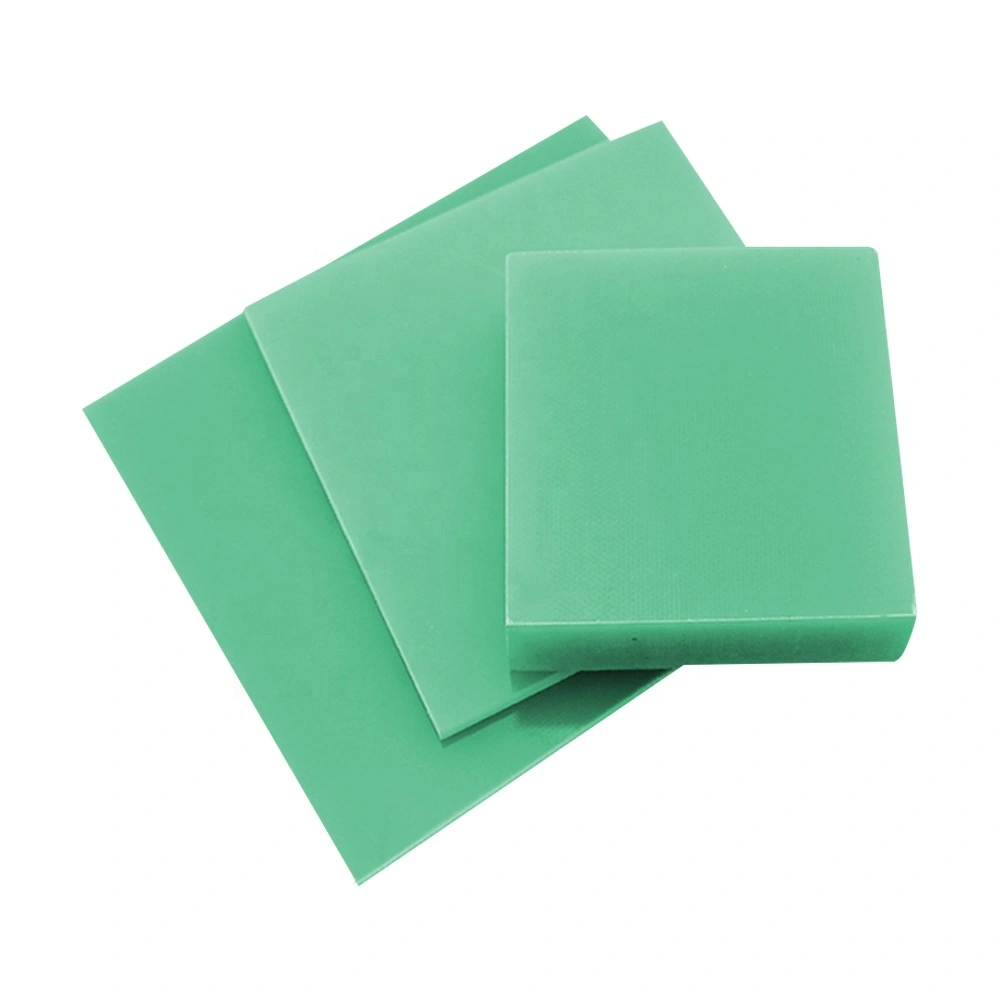Composition and Properties of G10 and FR4 Sheets
G10 Sheet Characteristics
G10 sheets are composed of continuous filament glass fabric impregnated with epoxy resin. This composition results in a material with exceptional mechanical strength, dimensional stability, and electrical insulation properties. G10 sheets exhibit low moisture absorption, high impact resistance, and excellent machinability. These attributes make G10 an ideal choice for applications requiring robust mechanical performance and resistance to harsh environmental conditions.
FR4 Sheet Specifications
FR4 sheets, while similar in basic composition to G10, are specifically formulated to meet flame retardancy standards. The "FR" in FR4 stands for "Flame Retardant," and the "4" indicates the level of flame resistance. FR4 sheets typically contain halogenated compounds or other flame-retardant additives in the epoxy resin. This formulation gives FR4 its characteristic self-extinguishing properties, making it indispensable in electrical and electronic applications where fire safety is paramount.
Comparative Analysis
When comparing G10 sheets and FR4 sheets, several key differences emerge. G10 generally offers superior mechanical strength, lower moisture absorption, and better dimensional stability under varying temperatures. FR4, while still possessing good mechanical properties, prioritizes flame retardancy and consistent electrical performance across a wide range of frequencies. The choice between G10 and FR4 often depends on the specific requirements of the application, balancing factors such as mechanical strength, electrical properties, and fire safety.
Applications and Industries
G10 Sheet Applications
G10 sheets find extensive use in applications requiring high mechanical strength and excellent electrical insulation. Common applications include:
- Structural components in aerospace and marine industries
- High-performance gears and bearings
- Electrical insulators in high-voltage equipment
- Precision machined parts for industrial machinery
The versatility of G10 sheets makes them a preferred choice in industries where reliability and performance under extreme conditions are crucial.FR4 Sheet Usage
FR4 sheets are predominantly used in the electronics industry, with their primary application being the manufacture of printed circuit boards (PCBs). Other applications include:
- Electrical insulation panels in consumer electronics
- Structural components in telecommunications equipment
- Insulating barriers in industrial control systems
- Flame-resistant enclosures for electrical components
The widespread adoption of FR4 in electronics is due to its consistent electrical properties and inherent flame resistance, crucial for ensuring the safety and reliability of electronic devices.Industry-Specific Considerations
Different industries have varying requirements that influence the choice between G10 and FR4 sheets. In aerospace and defense, where mechanical strength and reliability are paramount, G10 often takes precedence. The electronics industry, with its stringent fire safety regulations, predominantly relies on FR4. Industrial manufacturing may use both materials, depending on whether the priority is mechanical robustness (G10) or fire safety (FR4). Understanding these industry-specific needs is essential for manufacturers and engineers when selecting the appropriate material for their projects.
Manufacturing Processes and Quality Control
Production Techniques
The manufacturing of G10 and FR4 sheets involves similar processes, with key differences in the materials and quality control measures. Both start with layers of glass fabric impregnated with epoxy resin. These layers are then stacked and subjected to heat and pressure in a process called lamination. For FR4, additional steps are taken to incorporate flame-retardant additives uniformly throughout the material. The precision of this process is crucial for ensuring consistent properties across the entire sheet.
Quality Assurance Measures
Rigorous quality control is essential in the production of both G10 and FR4 sheets. This includes:
- Material composition analysis to ensure correct ratios of glass fiber to resin
- Dimensional stability tests under various environmental conditions
- Electrical property testing, including dielectric strength and insulation resistance
- Mechanical strength tests, such as flexural and tensile strength measurements
For FR4, additional flame resistance tests are conducted to verify compliance with industry standards. These quality assurance measures are critical for maintaining the reliability and performance of the final products.Industry Standards and Certifications
Both G10 and FR4 sheets must meet specific industry standards and certifications. FR4, in particular, is subject to stringent regulations due to its use in electronics. Common standards include:
- UL 94 for flame retardancy classification
- IPC-4101 for specification of base materials for rigid and multilayer printed boards
- ASTM D709 for standard specification of laminated thermosetting materials
Adherence to these standards ensures that G10 and FR4 sheets meet the necessary quality and safety requirements for their intended applications, providing confidence to manufacturers and end-users alike.Conclusion
While G10 and FR4 sheets share similarities as glass epoxy laminates, they serve distinct purposes in various industries. G10 excels in applications requiring high mechanical strength and moisture resistance, while FR4 is the material of choice for flame-retardant electrical insulation, particularly in PCBs. Understanding the unique properties, manufacturing processes, and quality control measures for each material is essential for making informed decisions in engineering and manufacturing contexts. As technology advances, both G10 and FR4 continue to evolve, meeting the ever-increasing demands of modern industries for high-performance, reliable materials.
Contact Us
Are you looking for high-quality G10 or FR4 sheets for your next project? With over 20 years of experience in producing and selling insulating sheets, we can provide you with the perfect solution tailored to your needs. Contact us today at info@jhd-material.com to learn more about our products and how we can support your manufacturing requirements.
| Product name | G10 | FR4 |
| Picture | ||
| Temperature resistance | 125℃ | 135℃ |
| Flame retardant grade | UL94-V1 | UL94-V0 |








